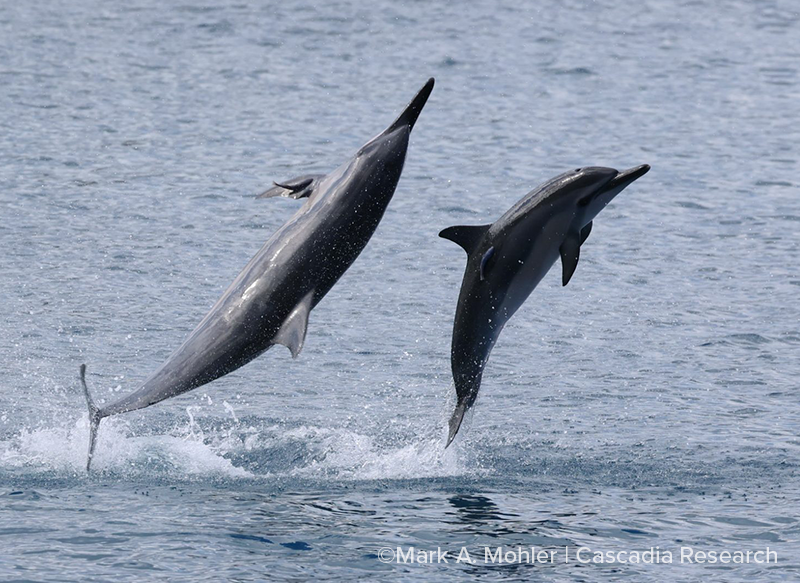TADpole Breaks New Ground in Spinner Dolphin Studies

During field work in O’ahu, Hawaii in earlier this summer (2025), SDRP collaborated with Robin Baird of Cascadia Research Collective to deploy satellite-linked tags on spinner dolphins. This was the first time this species has been tracked with satellite-linked tags — a feat made possible thanks to our TADpole, the pole-mounted Tag Attachment Device that we developed in partnership with Woods Hole Oceanographic Institution.

We’ve been successfully using the TADpole to tag free-swimming Atlantic spotted dolphins offshore of Florida’s west coast and our most recent work in Hawaii shows that this tool can be used to successfully and safely deploy tags on a different species — one that is quite acrobatic and fragile — and be used by different taggers on various boats to deploy a variety of tags. These most recent TADpole tests demonstrate its utility as a field conservation tool and takes us beyond prototype testing.
Thanks to the TADpole and satellite telemetry advances, we’re now able to address questions related to spinner dolphin movements around and among the Hawaiian islands, including inshore and offshore movements, diving behaviors and questions that remained from our groundbreaking research under Dr. Ken Norris on spinner dolphins off the Island of Hawai’i 45 years ago.
The tags we deployed (with support from Dolphin Quest) on nine dolphins off the west coast of O’ahu have provided some initial findings, including that most of the dolphins stayed around the O’ahu coast, though two traveled briefly to Moloka’i,and that the dolphins are making nighttime feeding dives to 900 feet and staying down for more than nine minutes.

The map shows the cumulative movements of nine Hawaiian spinner dolphins tagged in June off O’ahu. The tracks run from tagging through July 21, 2025.




